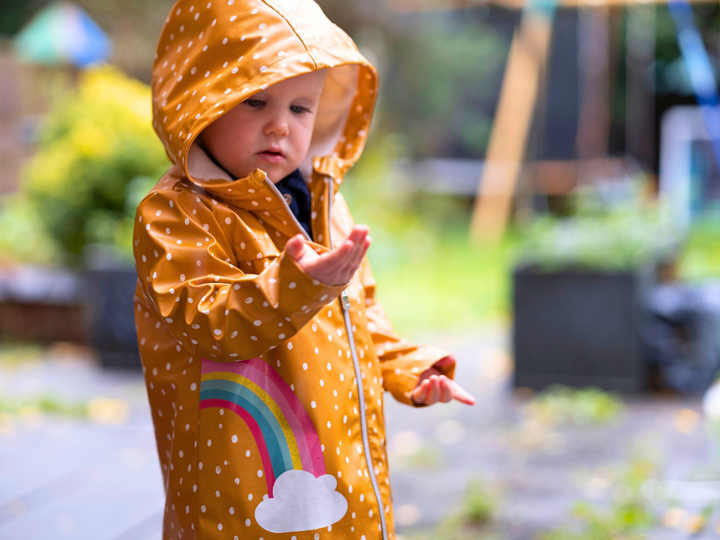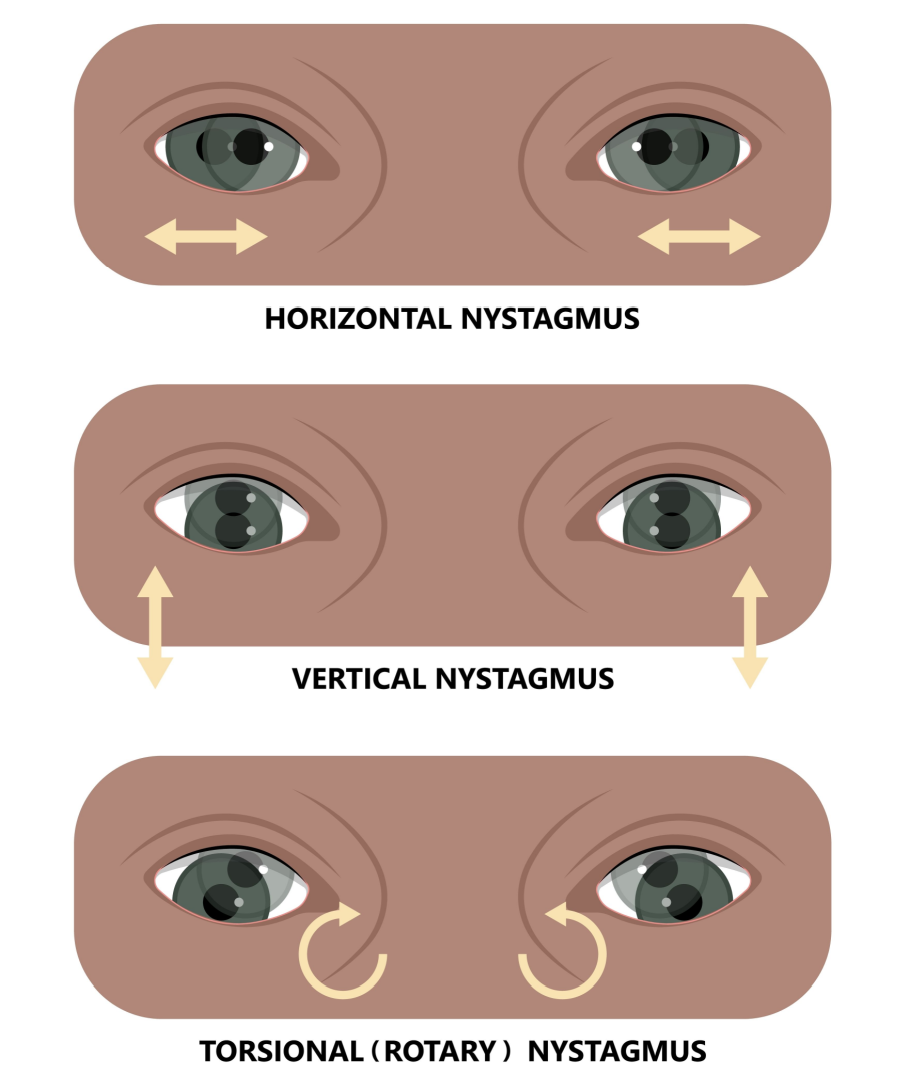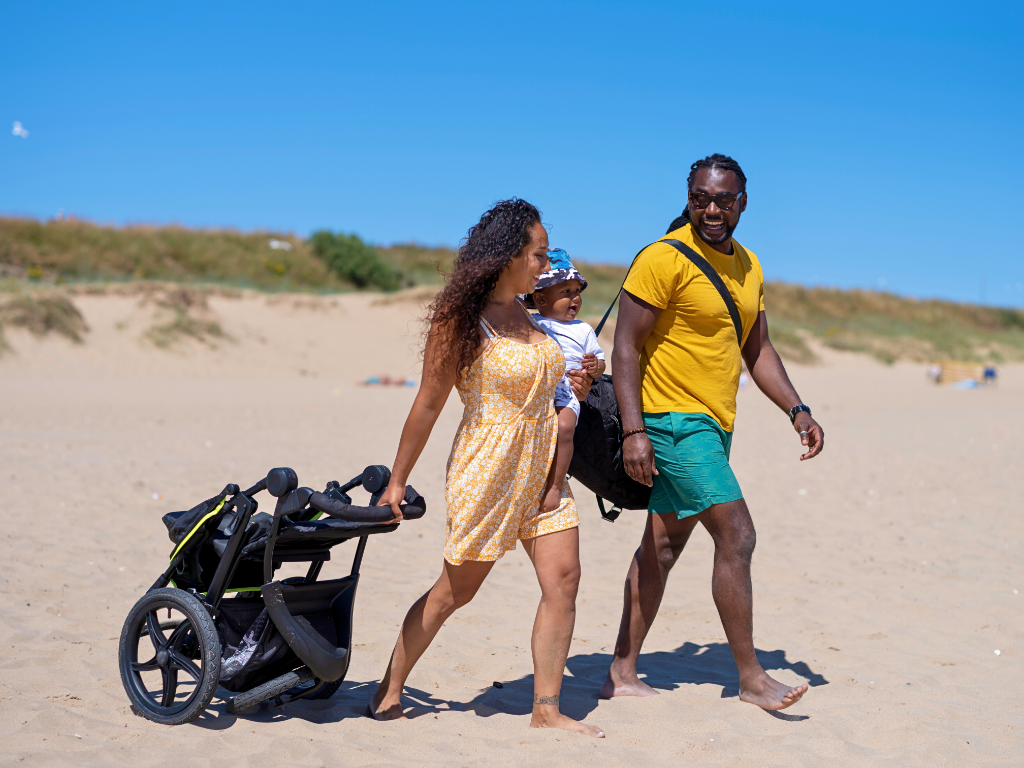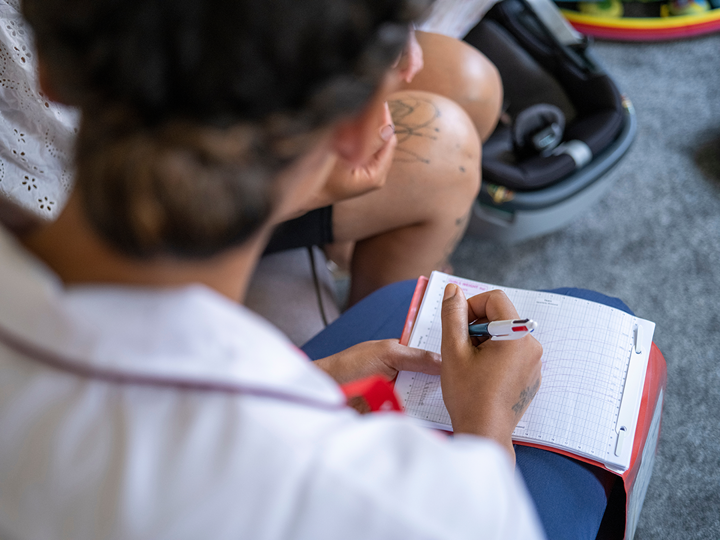Nystagmus

Nystagmus is a complex eye condition where eyes appear to wobble or flicker. They may move side to side, up and down or rotate. Your child will see a still image, even if their eyes are moving rapidly. This is because their brains adapt to the wobble or flicker.
Explore the topics on this page:
Understanding nystagmus
There are 2 main types of nystagmus:
- congenital nystagmus which appears at birth or in the first few weeks of life
- acquired nystagmus which appears later on in life
Congenital nystagmus is often noticed when a baby is having difficulty following an object with their eyes.
Nystagmus can affect babies, children and young people in different ways. You may find it takes them longer to do everyday activities and they may find some sports more difficult. Encourage them to find a sport or activity they enjoy. They might want to try an adapted sport such as goalball. It's important to let your child or young person try lots of different activities.
They may find it confusing looking at books or screens with lots of cluttered pictures. Books and screens with bold simple pictures may be easier for them to read.
When your child is tired their nystagmus symptoms may worsen. Try introducing more breaks to give them more time to complete their everyday activities.
As your child grows, they will adapt to their level of vision and ability to judge depth. They may need more support when learning to walk or climb stairs. They may also need support when travelling independently when they're older.

Null point or null zone
The null point or null zone is the position where vision is clearest. Your baby, child or young person will try to find their null point automatically. Some children and young people may tilt or turn their head to find their null point. This helps them to see better. Your child or young person may not realise that they are tilting or turning their head.
Babies will try to find their null point when they first sit up. It's common for parents to notice this. Your baby may:
- hold their head to one side to look at things
- look at people sideways
- tilt their chin up or down
Some people with nystagmus do not have a null point.
Light sensitivity
Children and young people with nystagmus can be sensitive to bright lights.
There are some ways you can help your baby, child or young person including:
- using the hood or sunshade on the buggy
- using peaked caps or hats with brims
- fitting a sun blind in your car
- using tinted or reactive glasses
- finding shaded areas or creating shade when outside

Helping nystagmus at home
There are lots of ways you can help your baby, child or young person with nystagmus.
Your baby may not be able to follow a slow moving toy or make eye contact with you during feeding. Your baby may also not be able to see very far.
You can help them by:
- keeping your face close to theirs
- making exaggerated expressions when you talk to them during feeding, changing and bathing
- giving them brightly coloured toys with different shapes, sizes, textures, switches and sounds
They may not be able to recognise your face yet, but they will learn the sound of your voice. They will then be able to link the sound of your voice with what they see. Once your baby is able to sit up, they may not be able to see you when you walk across the room. If you talk to them while you are moving, they will learn to follow your voice.
Some toddlers with nystagmus may seem fearless and not worried about bumping into things. Other toddlers with nystagmus can be hesitant to walk. This is because nystagmus affects their 3D vision and makes it hard to judge distance and speed. They may find stairs, changes in colour or changes in texture difficult because they cannot see if the floor is flat.
Your toddler may rely on their memory to move around at home. They may bump into things or feel confused when you move things around. They may also struggle to find things.
It's important to read books to your toddler. Let them hold pages close to their face so they can enjoy the colours and pictures. Make sure to have lots of books with flaps, sounds and different textures so they can enjoy the book in lots of different ways.
You can help your toddler by:
- encouraging them to be curious about the world around them
- doing everyday tasks with your toddler like washing as this can encourage their sight
Children may find it hard to make eye contact, read expressions or know when someone is talking to them. This can make them seem shy or unfriendly. A helpful strategy is for your child to explain that they sometimes feel left out because of their nystagmus. This will help school staff, parents and other children to understand your child's nystagmus.
In a cluttered environment, your child may take longer to recognise familiar faces or find toys to play with. It can also take them longer to understand how to share with other children. Try to give your child time to take in their surroundings and show them where important things are.
Children with nystagmus will memorise their surroundings. Try not to move objects or furniture around too much, especially without telling them. This can cause confusion and frustration.
It may take a little longer, but most children will learn how to ride a bike without using stabilisers.
A common concern for parents of children with nystagmus is their child learning to cross roads. Your child will need a lot of practice and support until they can safely and independently manage roads and unfamiliar steps.
You can ask for mobility training support from your local sight support team.
Bedford Borough Visual Impairment Team (Sensory Services)
Your young person may need more time to take in the world around them. In a cluttered environment, it may take them longer to recognise familiar faces. It can also take them longer to understand sharing with other young people. Make sure to give your young person time to take in their surroundings and show them where important things are.
Young people with nystagmus will memorise their surroundings. Try not to move objects or furniture around too much, especially without telling them. This can cause confusion and frustration.
You can ask for mobility training support from your local sight support team.
Bedford Borough Visual Impairment Team (Sensory Services)
Helping nystagmus at school
The eye team will advise, alongside other services, what support your child will need.
A qualified teacher of children and young people with vision impairment (QTVI) may be involved in your child's care if their vision is significantly impaired. You may need to speak to your local sensory services to access this for your child or young person.
Bedford Borough Visual Impairment Team (Sensory Services)
Central Bedfordshire Sight and Hearing Loss
Accommodations that may be offered to help your child or young person include:
- printed materials with large print
- large print textbooks
- large format exercise books
- adjustable computer screens
- adapted exam papers, including larger fonts, simplified diagrams or being printed on a coloured paper of your child or young person's choice
- extra time for tests and exams
- handheld devices which mirror what is on the screen or whiteboard
The Nystagmus Network has a range of free PDF resources that you may find helpful.
Last reviewed: 11 March, 2025

